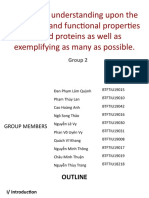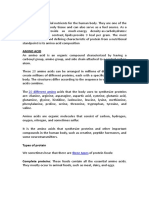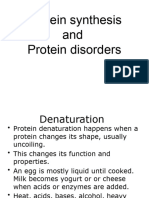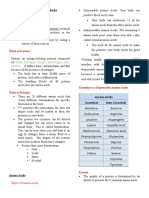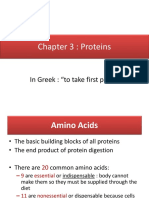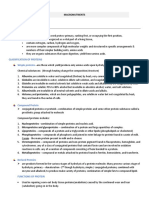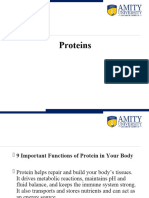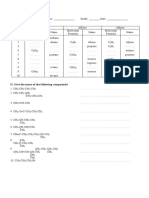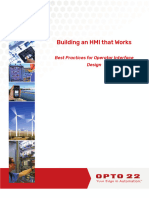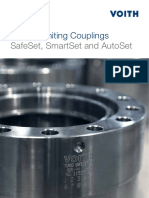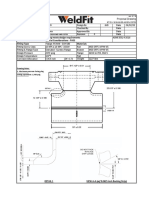0% found this document useful (0 votes)
26 views8 pagesProtein
Dietary protein plays an important role in nutrition and health by providing amino acids for growth, maintenance, and repair. It supports the composition and function of cells and tissues. While protein requirements are traditionally based on nitrogen balance studies, these may not fully capture minimum needs due to metabolic adaptation. Protein performs many vital roles including cell structure, transport, protection, and energy provision. It is required for enzyme and hormone production and helps regulate fluid balance, pH, and immune function. Maintaining adequate protein intake through foods like fish, meat, and dairy supports overall health and resistance.
Uploaded by
hanhu140103Copyright
© © All Rights Reserved
We take content rights seriously. If you suspect this is your content, claim it here.
Available Formats
Download as DOCX, PDF, TXT or read online on Scribd
0% found this document useful (0 votes)
26 views8 pagesProtein
Dietary protein plays an important role in nutrition and health by providing amino acids for growth, maintenance, and repair. It supports the composition and function of cells and tissues. While protein requirements are traditionally based on nitrogen balance studies, these may not fully capture minimum needs due to metabolic adaptation. Protein performs many vital roles including cell structure, transport, protection, and energy provision. It is required for enzyme and hormone production and helps regulate fluid balance, pH, and immune function. Maintaining adequate protein intake through foods like fish, meat, and dairy supports overall health and resistance.
Uploaded by
hanhu140103Copyright
© © All Rights Reserved
We take content rights seriously. If you suspect this is your content, claim it here.
Available Formats
Download as DOCX, PDF, TXT or read online on Scribd
/ 8















